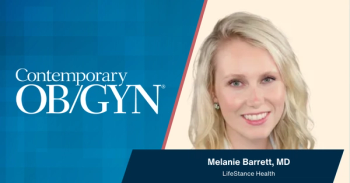
No more inhaled nitric oxide for premature infants?
Contrary to some previous findings, inhaled nitric oxide therapy does not reduce the risk of death or further lung problems in premature infants weighing less than 1,500 g and should not be administered to this population, according to a study by the National Institute of Child Health and Human Development of the National Institutes of Health. However, a separate prospective, longitudinal study of similarly sick and premature infants found that those treated with nitric oxide at birth had improved neurodevelopmental outcomes at 2 years of age.
Contrary to some previous findings, inhaled nitric oxide therapy does not reduce the risk of death or further lung problems in premature infants weighing less than 1,500 g and should not be administered to this population, according to a study by the National Institute of Child Health and Human Development of the National Institutes of Health. However, a separate prospective, longitudinal study of similarly sick and premature infants found that those treated with nitric oxide at birth had improved neurodevelopmental outcomes at 2 years of age.
The study by the NIH enrolled 420 infants born at less than 34 weeks' gestation weighing between 401 and 1,500 g. All of the infants had either respiratory distress syndrome, sepsis, pneumonia, or another severe breathing problem that required them to receive assisted ventilation. The infants were randomized to receive either placebo or 5 to 10 ppm inhaled nitric oxide.
The rate of death or bronchopulmonary dysplasia was 80% in the nitric oxide group versus 82% in the placebo group (relative risk [RR], 0.97; 95% CI; 0.86–1.06, P=0.52), and the rate of bronchopulmonary dysplasia was 60% versus 68% (RR 0.90; 95% CI; 0.75–1.08; P=0.26). The researchers found no significant differences in the rates of severe intracranial hemorrhage or periventricular leukomalacia either.
The second study included 138 children. The researchers found that about one quarter (24%) of the children that received NO therapy at birth had abnormal neurodevelopmental outcomes versus almost half (46%) of those who did not. Abnormal developmental outcomes were defined as either disability (cerebral palsy, bilateral blindness, or bilateral hearing loss) or delay (no disability, but one score of less than 70 on the Bayley Scales of Infant Development II). The improved outcomes in the NO group were primarily due to a 47% decrease in the risk of cognitive impairment (defined as a score of less than 70 on the Bayley Mental Developmental Index).
Van Meurs KP, Wright LL, Ehrenkranz RA, et al. Inhaled nitric oxide for premature infants with severe respiratory failure. N Engl J Med. 2005;353:13-22.
Mestan KK, Marks JD, Hecox K, et al. Neurodevelopmental outcomes of premature infants treated with inhaled nitric oxide. N Engl J Med. 2005;353:23-32.
Newsletter
Get the latest clinical updates, case studies, and expert commentary in obstetric and gynecologic care. Sign up now to stay informed.










